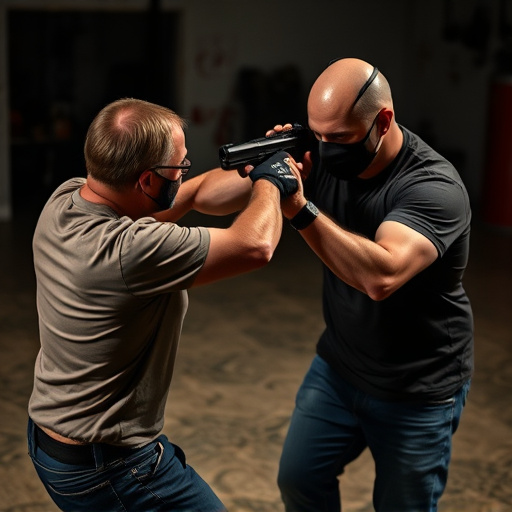In case of pepper spray exposure, immediately wash eyes under running water for 15 minutes to remove residue, soothe discomfort, and prevent further irritation. Seek medical attention if persistent symptoms or severe reactions occur. Choose a reliable personal protection spray with good range and duration, stored properly for maximum effectiveness. After use, decontaminate skin and clothing, then perform the 15-minute eye washing procedure, followed by warm shower and antihistamines for comfort. Monitor symptoms for unusual reactions requiring medical assistance.
“Protecting yourself against unexpected assaults has never been more crucial. This comprehensive guide delves into the world of personal protection sprays, with a focus on inflammatory agent (pepper) spray. Understanding its composition and effects empowers users to make informed decisions. We break down essential aspects like eye washing procedures – a vital step for immediate relief – and choosing the right spray. Additionally, safe handling, storage, and post-exposure care ensure your well-being. Learn these critical practices involving pepper spray eye washing procedure for enhanced safety.”
- Understanding Pepper Spray Composition and Effects
- Eye Washing Procedure: Steps for Immediate Relief
- Choosing the Right Personal Protection Spray
- Safe Handling and Storage Practices
- Post-Exposure Care and Recovery Measures
Understanding Pepper Spray Composition and Effects
Pepper spray, an inflammatory agent personal protection spray, is designed to incapacitate an assailant temporarily by causing a burning sensation and difficulty breathing. Its composition typically includes capsaicin, the active ingredient found in chili peppers, suspended in a liquid solution. When deployed, pepper spray irritates the eyes, nose, throat, and skin, leading to temporary blindness, coughing, and pain.
Understanding the eye washing procedure after exposure to pepper spray is crucial for mitigating its effects. Eye washing should commence immediately upon contact with the spray. The affected individual should stand under running water for at least 15 minutes, ensuring that all residual spray is thoroughly rinsed away. This step helps to alleviate discomfort and prevent further irritation or damage. Medical attention may still be necessary, especially if symptoms persist or severe reactions occur.
Eye Washing Procedure: Steps for Immediate Relief
In the event of exposure to pepper spray, immediate action is crucial for mitigating its intense effects. The first step in the eye washing procedure is to seek a safe location away from the source of irritation. Remove any contact lenses if present, as they can trap the irritant and make washing more difficult.
Next, flush the eyes thoroughly with clean water for at least 15 minutes. Hold your eyes open wide and ensure the water flows over both the eyelids and the eye itself. This process helps to dilute and dislodge any remaining pepper spray particles. For added relief, you can use a soft cloth or tissue to gently blot away any residual moisture or irritant from the skin around the eyes.
Choosing the Right Personal Protection Spray
When selecting a personal protection spray, understanding your specific needs and potential threats is crucial. These sprays are designed to provide immediate defense against various aggressors, from close-range attackers to those armed with weapons or chemicals. A key consideration is the type of agent used; for instance, pepper spray is a popular choice as it temporarily incapacitates an assailant by irritating the eyes, nose, and respiratory system, allowing you to escape safely.
Additionally, knowing the range and duration of protection is essential. Eye-washing procedure protocols often accompany these sprays, ensuring that users are prepared to mitigate any eye irritation or damage caused by the spray’s active ingredients. The right spray should offer a balanced combination of power, reliability, and ease of use, especially in high-stress situations where quick deployment and effectiveness can make all the difference.
Safe Handling and Storage Practices
Proper handling and storage are crucial for ensuring the effectiveness of a pepper spray personal protection spray. Always keep it in its original packaging, stored in a cool, dry place away from direct sunlight or extreme heat. Never leave it unattended or exposed to high temperatures, as this can degrade its active ingredients.
When using, follow recommended procedures, such as aiming for the eyes and face of the assailant while keeping your body protected. After use, promptly clean any contaminated clothing or skin with a mild detergent and water, focusing on areas that came into direct contact with the spray. For eye washing procedure, rinse eyes thoroughly with clean water for at least 15 minutes to ensure complete decontamination.
Post-Exposure Care and Recovery Measures
After exposure to a pepper spray, it’s crucial to initiate immediate post-exposure care. The first step is to move to a safe location away from the source of the spray. If possible, seek medical attention promptly, especially if symptoms persist or are severe. Eye washing procedure should begin as soon as accessible water is available. Hold eyes open and gently pour water over them for at least 15 minutes, making sure to wash both the eye surfaces and under the eyelids. This thorough flushing helps to dilute and remove any residual pepper spray particles.
Additional care measures include removing any contaminated clothing or jewelry, taking a warm shower (not hot) to wash off skin, and using over-the-counter antihistamines or pain relievers for discomfort. It’s important to monitor symptoms closely for the next 24–48 hours, watching for breathing difficulty, chest pain, nausea, or persistent eye irritation. If any severe or unusual reactions occur, seek immediate medical assistance.
In conclusion, understanding the composition and effects of pepper spray, along with the correct eye washing procedure, choosing the right personal protection spray, safe handling and storage practices, and post-exposure care are crucial steps in ensuring your safety. Remember that knowledge is a powerful tool, and being prepared can make all the difference in real-world scenarios involving inflammatory agent personal protection sprays, such as pepper spray.
